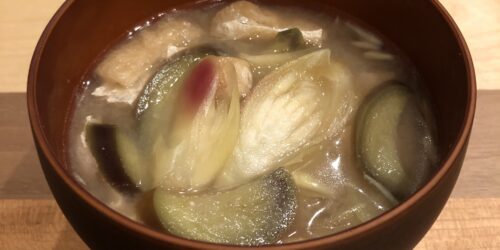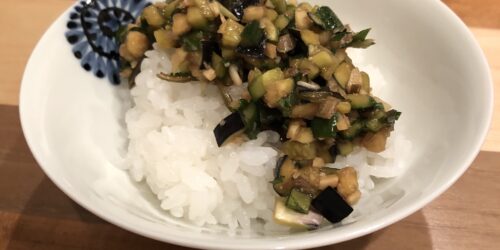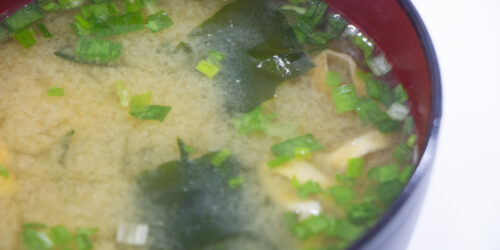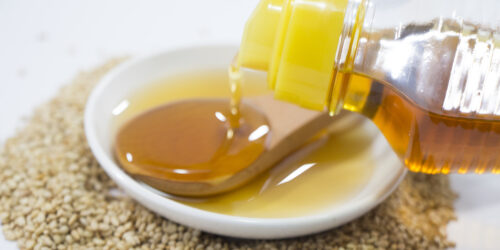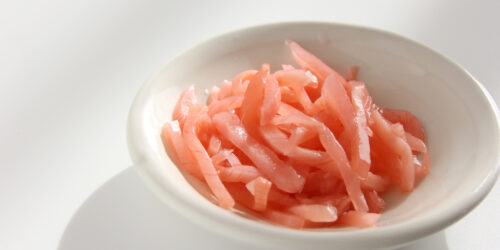What Is Myoga and How Is It Used?
What Is Myoga?
Myoga is also called “Myoga ginger” or “Japanese ginger”. It’s the species Zingiber mioga in the family Zingiberaceae. The spikes and stems of sprouts are used for food.
The Country of origin is said to be Japan or China, and it is not clear.
Myoga is harvested from summer through autumn, and it’s commonly used as summery food in Japan.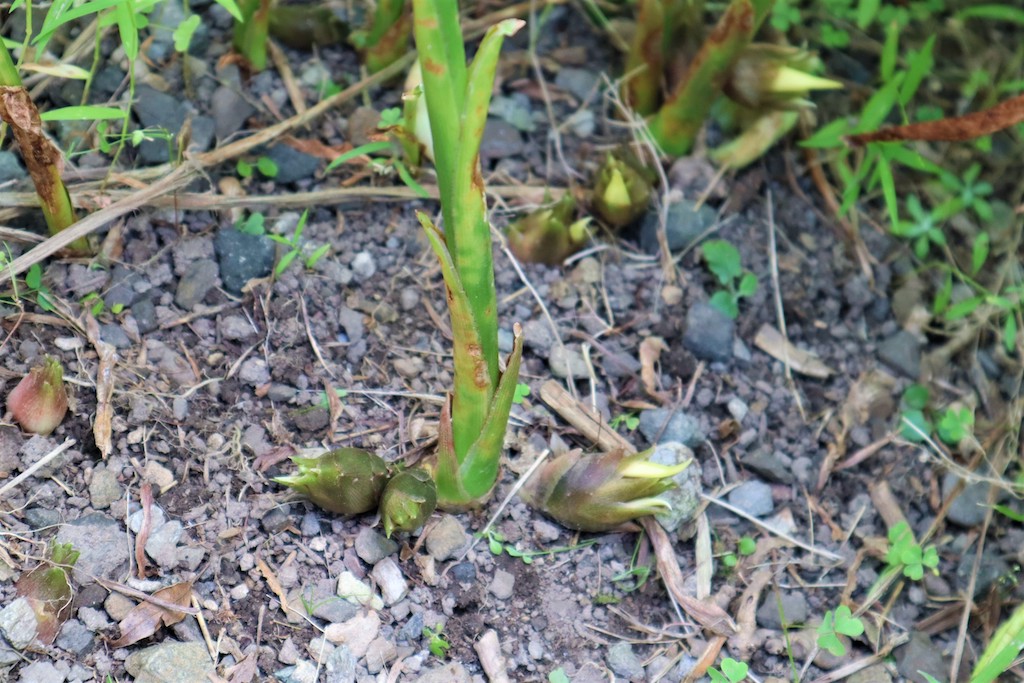 ▲Myoga Growing from Soil
▲Myoga Growing from Soil
What Does Myoga Taste Like?
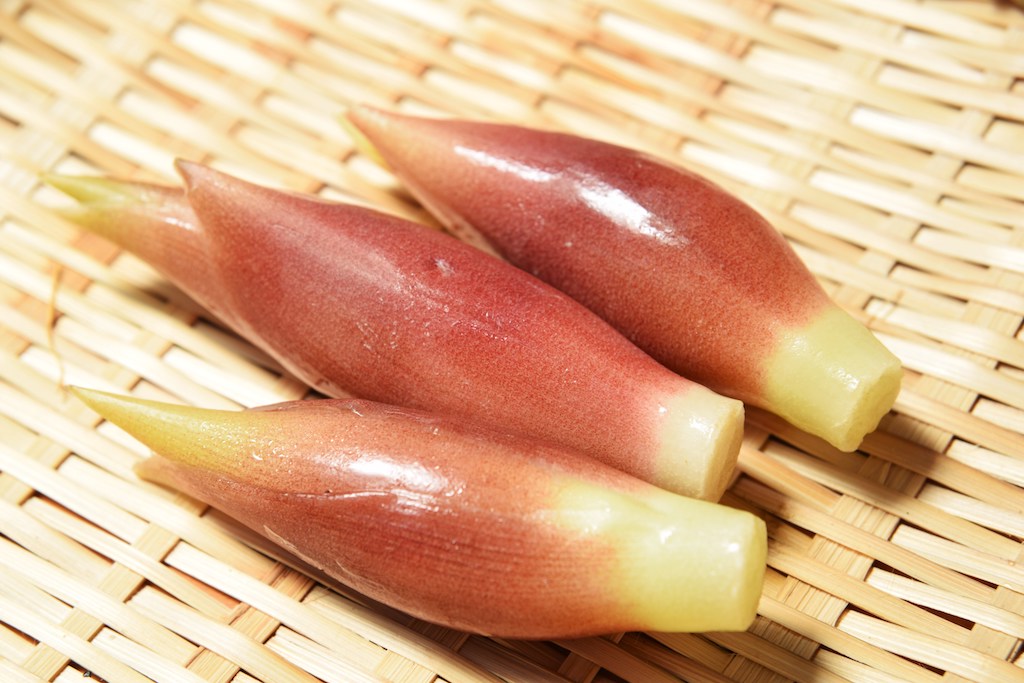
You can feel both refreshing and bitterness taste from myoga, and the scent of it is very unique. Also it has subtle pungent taste.
The texture of myoga is similar to green onion when eating raw. It gets a little softer when cooked, but you can enjoy the unique scent without disappearing.
What’s the Difference Between Myoga and Ginger?
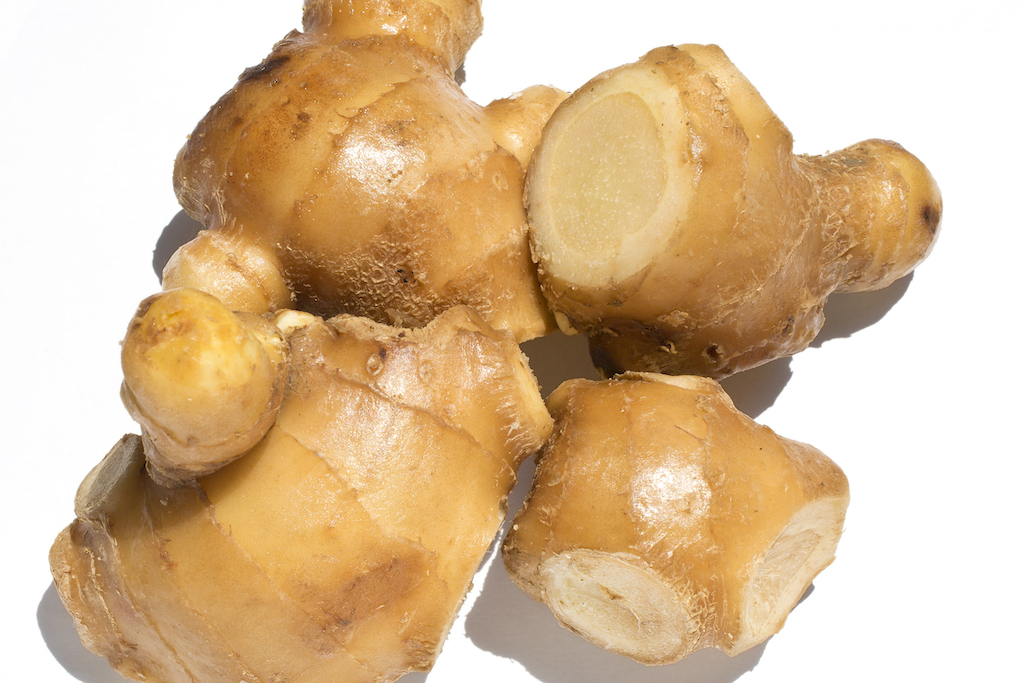 ▲Ginger
▲Ginger
Both myoga and ginger are the species Zingiber mioga in the family Zingiberaceae.
Actually, the roots and leaves of those two look just like indistinguishable although the appearance of those two are totally different.
But the edible part of them are also different:
・Myoga → The spikes and stems of sprouts are used for food.
・Ginger → The stem and root are used for food.
Also, they have different taste:
・Myoga → Has just a little bit of pungent taste.
・Ginger → Has strong pungent taste being stimulating to the tongue.
How Is Myoga Used?
Used as Condiment
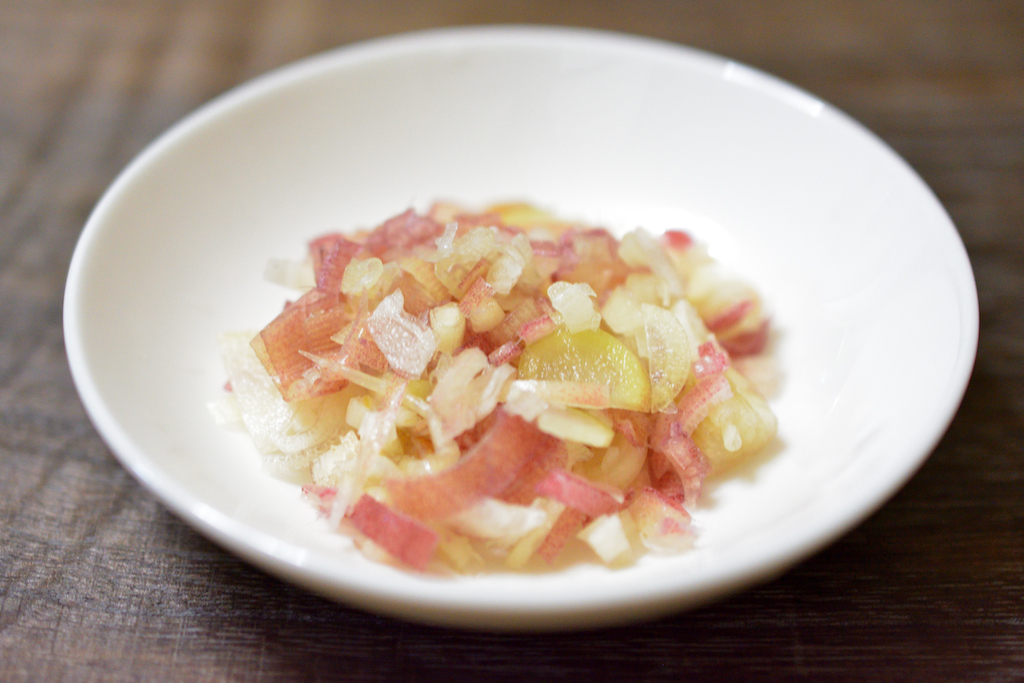
Minced myoga is really popular spice for noodle dishes such as somen noodles. The spice set of minced myoga, minced green onion, and shiso (Japanese basil) is perfect especially for cold noodles in summer.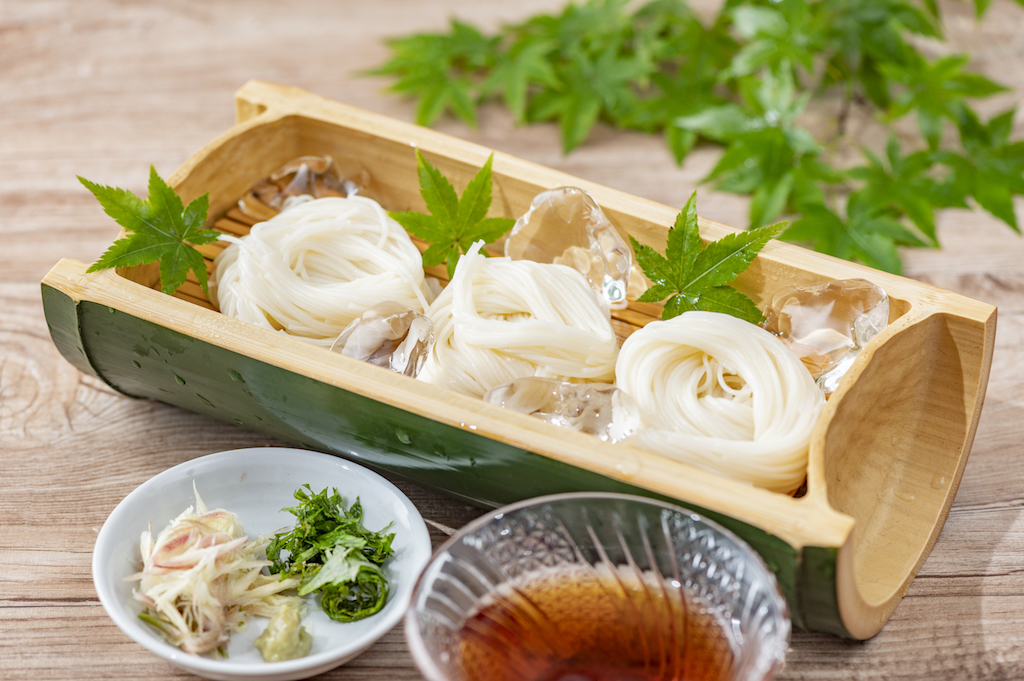 ▲Somen Noodles with Spice Set
▲Somen Noodles with Spice Set
Also, cold tofu (hiyayakko) topped with minced myoga is great appetizer for summer. 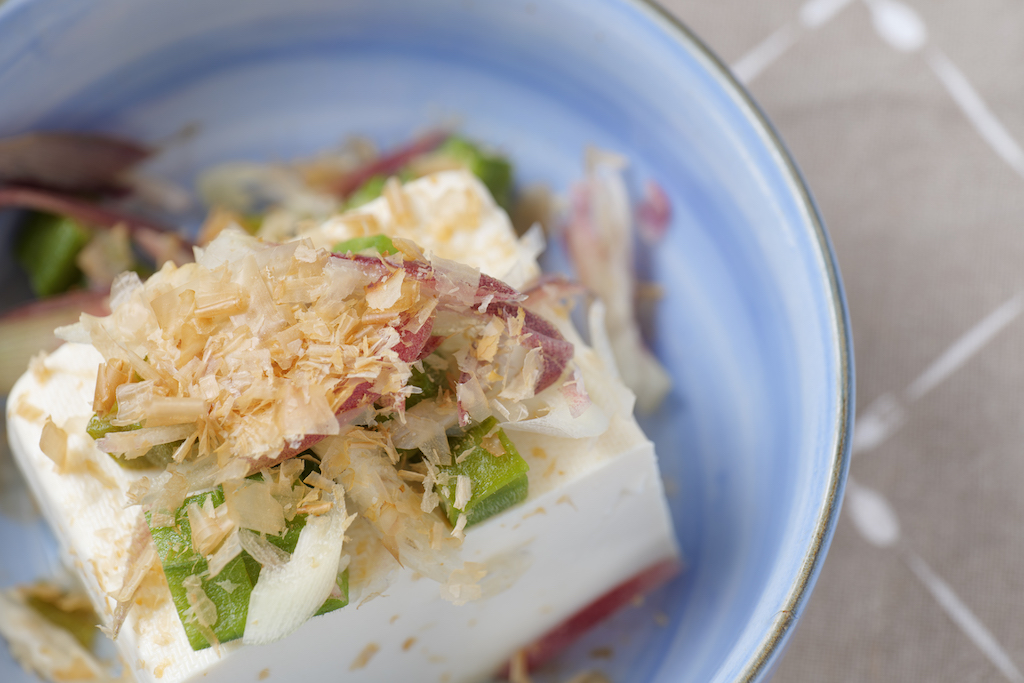 ▲Cold Tofu Topped with Myoga
▲Cold Tofu Topped with Myoga
Used as Independent Ingredient
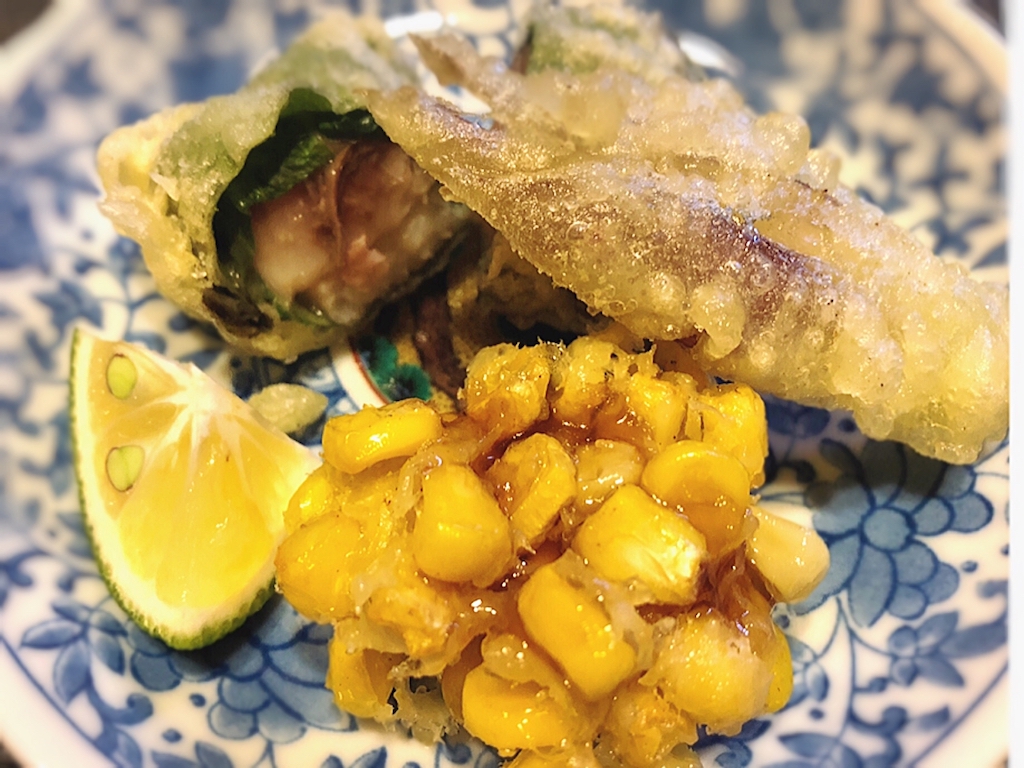 ▲Myoga Tempura
▲Myoga Tempura
Crispy myoga tempura matches so well with cold noodles dish in summer!
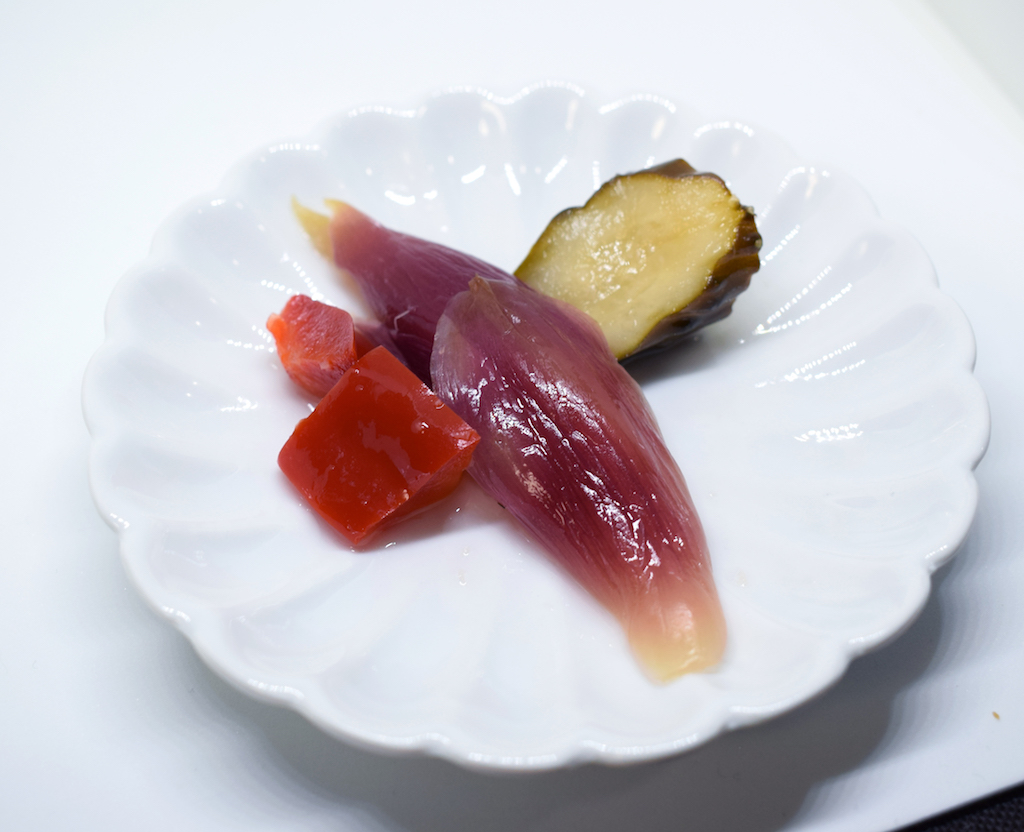 ▲Pickled Myoga
▲Pickled Myoga
Sweetened vinegar makes myoga nice and pink color. It’s going to add color to the table.
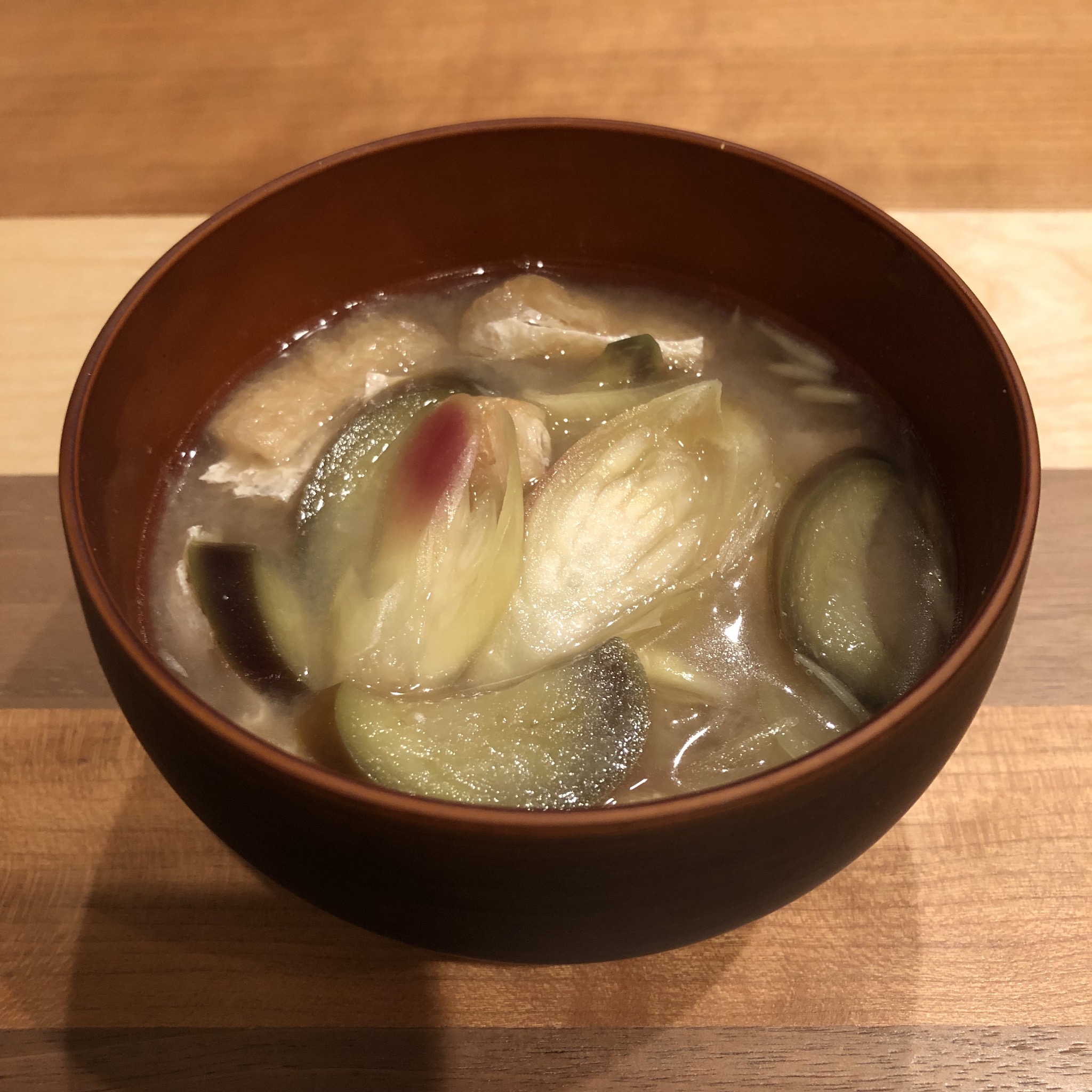 ▲Myoga Miso Soup
▲Myoga Miso Soup
The flavor of myoga perfectly matches with miso. Adding other summer vegetables together such as eggplant is recommended.
Nutrition and Benefits of Myoga
Below you will find the nutrition information for a 3.5 oz (100g) of myoga:
・Calories: 12kcal
・Water: 95.6g
・Total Carbohydrates: 2.6g
└Dietary Fiber: 2.1g
・Total Fat: 0.1g
・Protein: 0.9g
・Minerals
└Sodium: 1mg
└Potassium: 210mg
└Calcium: 25mg
└Magnesium: 30mg
└Other Minerals: 13mg (iron, zinc, etc)
・Vitamins: 2.9mg (vitamin C, E, etc)
Most of the ingredients of myoga are water. It is said that myoga can adjust body water to remove swelling since it contains potassium that drains excess salt. Also the effect of making blood smooth can be expected.
How Do You Store Myoga?
Myoga should be stored in a refrigerator after wrapping it with wet paper towel. You can also put it in a plastic container with some water.
The nutritional components of myoga do not change even if frozen, so it’s fine to keep it in a freezer with zipper type bag. (Please mince or slice myoga before freezing.) In that way, it can be stored for about a month.
Best Myoga Recipes
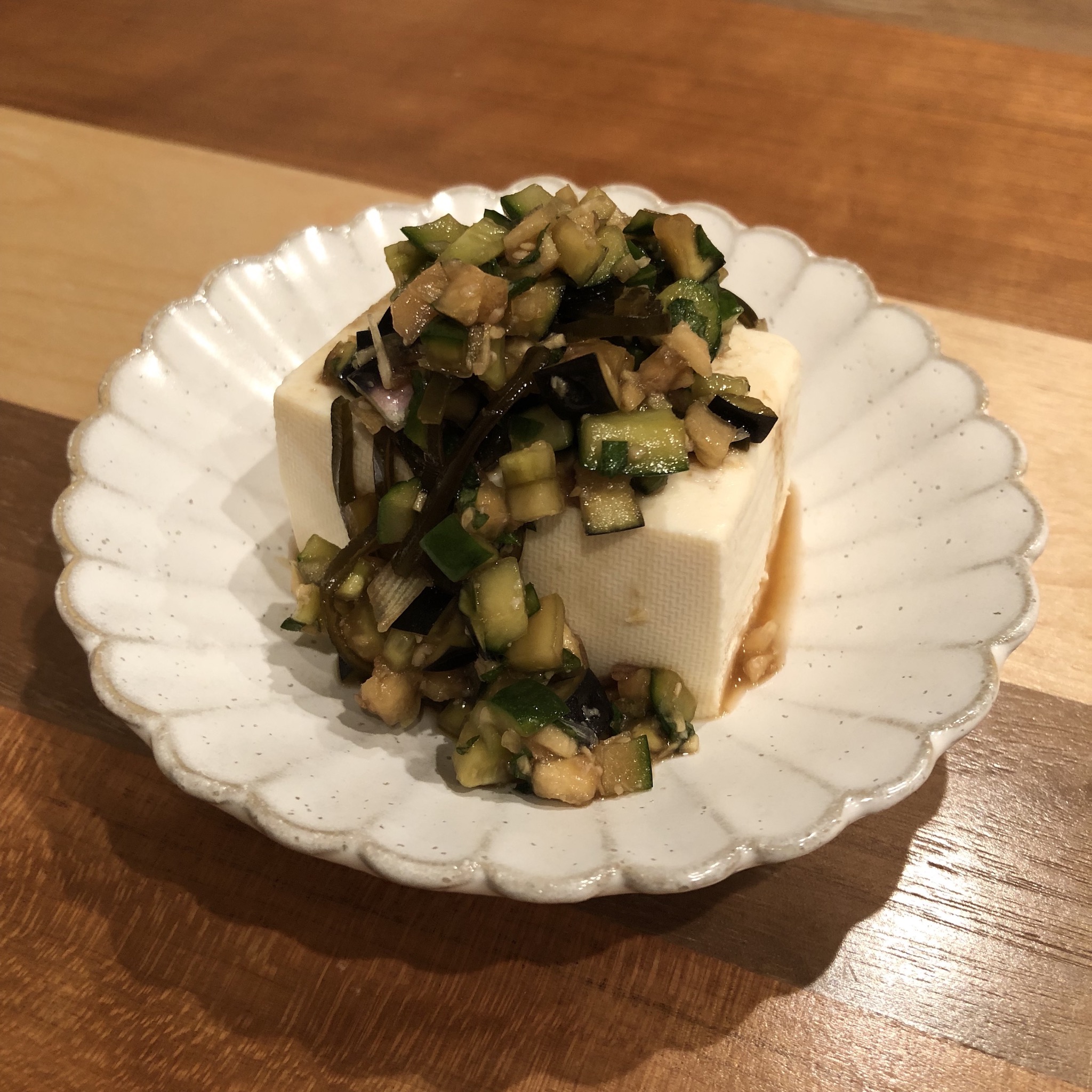
Yamagata Dashi (Pickled Vegetables) with Miso
It’s kind of pickled vegetables but can be all-purpose sauce for various dishes such as cold tofu. Even can be great partner for white rice!
GET THE RECIPE

Myoga Ginger Miso Soup
Putting myoga in miso soup is one of the easiest recipe that you can absolutely enjoy great flavor of myoga!
GET THE RECIPE

